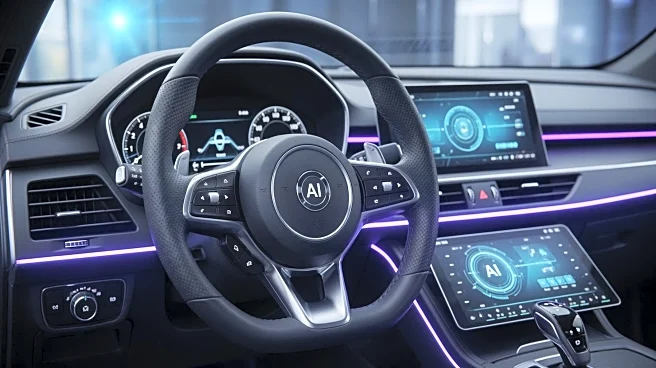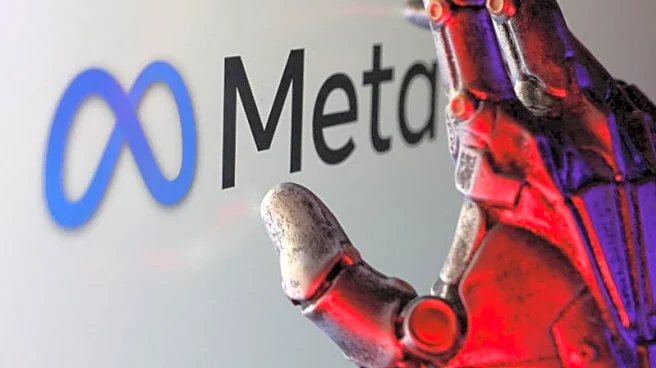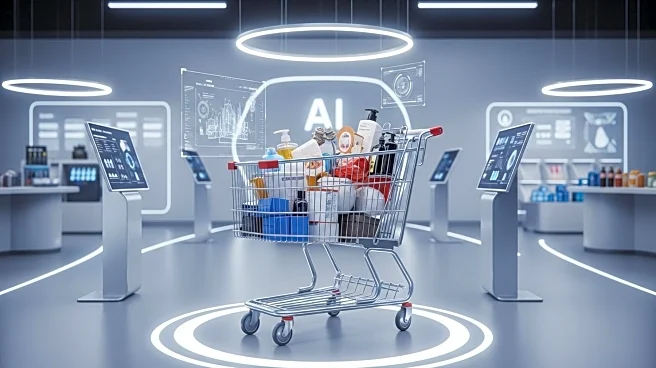What's Happening?
Uber has introduced a pilot program in the United States allowing drivers and couriers to earn additional income by completing digital microtasks designed to train AI models. These tasks include activities such as audio voice recording, image capturing,
and document submission in various languages. The initiative is part of Uber's strategy to enhance its platform for flexible work, aiming to make the experience of working for Uber easier and more rewarding. The company is also redesigning trip offer cards to provide drivers with more time and information before accepting trips, and introducing a new heatmap to direct drivers to high-demand areas. Additionally, Uber is expanding features to give women drivers more control over their rides and is implementing safety measures such as minimum rider ratings and consumer verification.
Why It's Important?
This development is significant as it positions Uber to potentially compete with established AI training platforms like Scale AI and Amazon's Mechanical Turks, which rely on low-cost labor for data annotation and labeling. By offering these microtasks to its drivers, Uber provides them with opportunities to supplement their income, addressing concerns over low pay due to high company take rates. The initiative also reflects Uber's ongoing efforts to improve driver satisfaction and safety, which could enhance its reputation and attract more drivers to its platform. However, the success of this program will depend on driver uptake and whether it effectively addresses their financial concerns.
What's Next?
Uber plans to continue rolling out updates to improve fairness and safety for drivers. This includes allowing drivers to set minimum ratings for riders and providing more transparency in high-demand areas through a redesigned heatmap. The company is also working on easing the process of driver deactivation and introducing a Delayed Ride Guarantee to compensate drivers for delays. These measures aim to enhance driver satisfaction and retention, which are crucial for Uber's business model. The company will likely monitor the pilot program's impact on driver earnings and engagement to determine its future expansion.
Beyond the Headlines
The introduction of AI training tasks for drivers raises ethical considerations regarding the classification of gig workers and their access to traditional employment benefits. As Uber continues to classify drivers as independent contractors, debates around worker rights and protections may intensify. Additionally, the program's reliance on drivers for AI training highlights the growing intersection between gig work and technology, potentially influencing future labor market dynamics.














